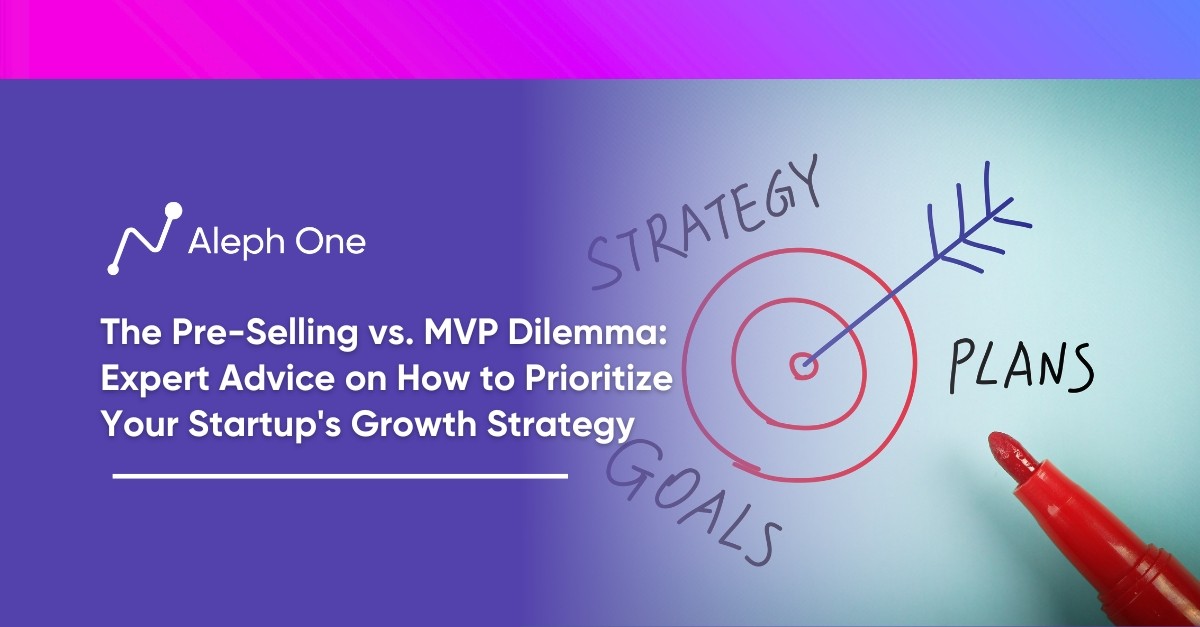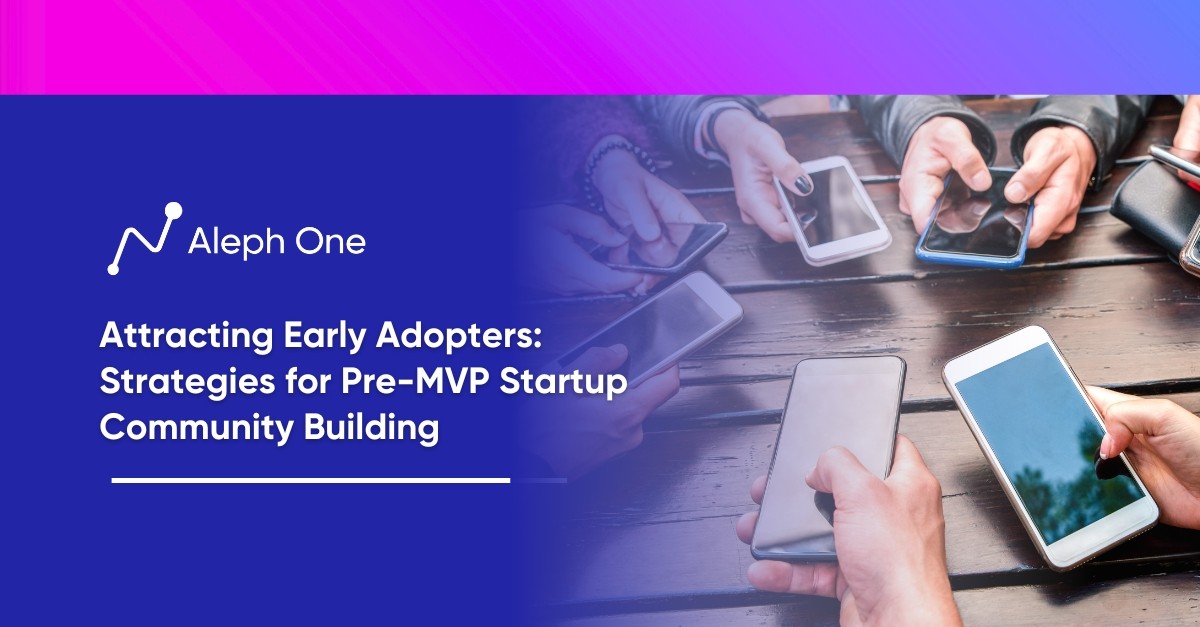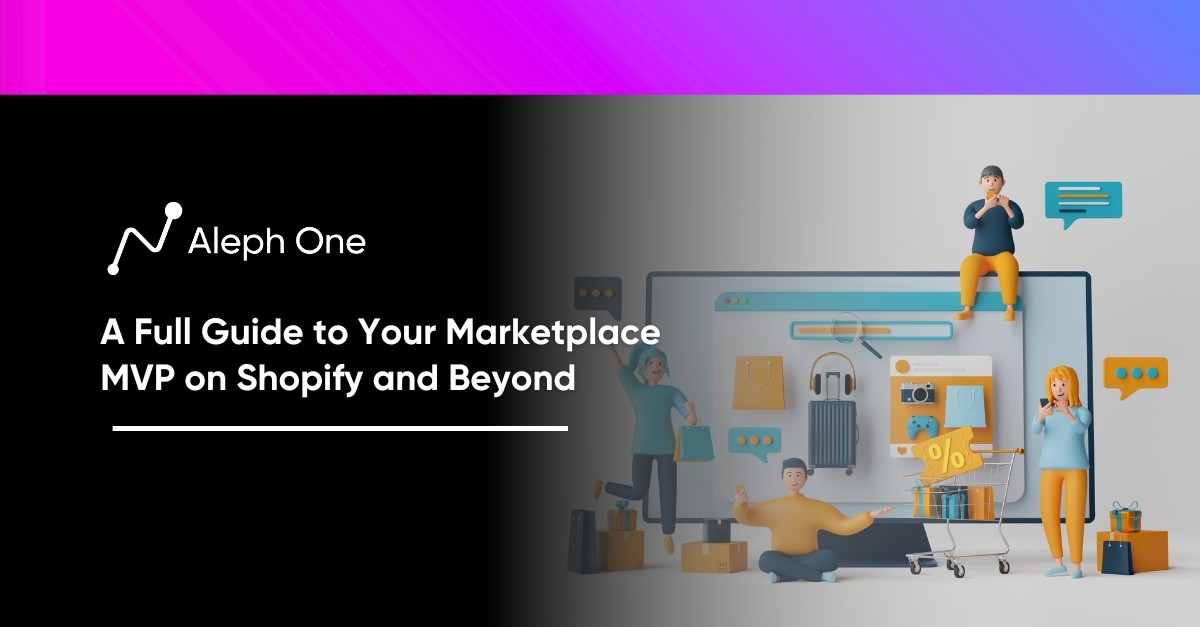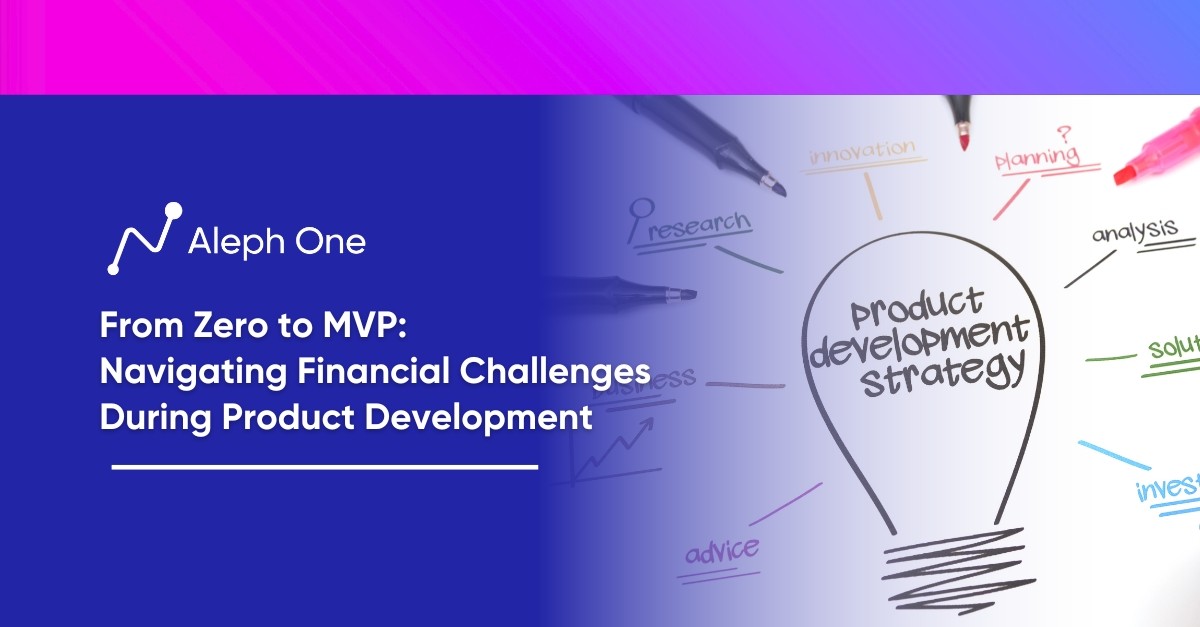Let’s work together to build something amazing. Share your project details and our team will reply to figure out the next steps to your success.

In the competitive world of startups, deciding to pre-sell or develop a minimum viable product (MVP) can make or break a company’s growth strategy. While pre-selling may appear enticing, offering upfront cash flow and customer commitments, it can be a risky move for startups yet to find product-market fit. This article delves into the pre-selling allure and why caution is advised, emphasizing the importance of an MVP in gathering customer feedback and achieving sustainable growth. Exploring real-world examples and expert insights sheds light on the power of an MVP in refining product-market fit. It helps entrepreneurs navigate the challenging terrain of startup growth. Whether opting for pre-selling or an MVP, understanding the nuances of each strategy is crucial for startup success.

The Call of Pre-Sales (and Why You Should Be Wary of Its Siren Song)
For early-stage startups, the allure of pre-selling their product can be hard to resist. Generating upfront cash flow and securing customer commitments is a surefire way to validate demand and fuel growth. However, pre-selling too early often creates disaster for startups that haven’t yet found product-market fit.
What is Pre-selling For Startups?
Pre-selling refers to taking customer orders and payments for a product still in development. This approach is tempting for startups because it provides validation that customers want their solution and working capital to build out their product. Some well-known startups successfully pre-sold products, including Oculus VR, which raised over $2.4 million on Kickstarter to build its first virtual reality headset.
Get to Know Your Target Customers
While pre-selling is risky, startups don’t fully understand their target customers. Without a clear product-market fit, they risk building a product that fails to meet customer needs or has a flawed value proposition. Even with customer pre-orders, the startup may revise or pivot their product.
Develop a Minimum Viable Product
Rather than pre-selling, most startups are better served by first developing a minimum viable product (MVP) to test key assumptions. An MVP allows startups to gather real-world customer feedback to find product-market fit before scaling. Pre-selling short-circuits this critical learning process and locks startups into building a product that may ultimately flop.
While the lure of pre-selling is strong, startups should resist the siren song. An MVP, not pre-sales, is the best way to build a product that delivers real customer value. Once product-market fit has been found, startups should consider pre-selling to a wider customer base to fuel growth. The allure of upfront capital and customer validation is not worth the risk of building a product.
The Case for Pre-Selling: How to Know if Your Startup Should Seal Deals Before Building an MVP
For startups with a lengthy sales cycle, pre-selling their product may be necessary to generate revenue and gain valuable customer feedback to build the minimum viable product (MVP). Enterprise software companies, in particular, often have to pre-sell to fund the initial development of their products.
Secure Customer Commitments & Gain Funding
If your startup is selling to large companies, the sales cycle can span 6-18 months or more. Pre-selling allows you to secure customer commitments and gain funding to build the product. The caveat is that you must have a well-defined vision and value proposition for customers to buy into. You’ll also need to determine how much funding you need from pre-sales to develop your MVP.
Zenefits – Pre-sold HR Software
For example, Zenefits, a human resources software startup, pre-sold its product to small businesses for over a year before launching. This allowed Zenefits to raise $15 million in funding to build its platform. Zenefits clearly articulated its product vision and value to customers, enabling it to pre-sell over $1 million in annual recurring revenue before the MVP was ready.
Anthropic – Pre-sold Constitutional AI Software
In contrast, enterprise AI startup Anthropic pre-sold its Constitutional AI software to generate feedback to shape the product design. Anthropic worked closely with early customers to understand their critical needs before building the MVP. This approach ensured Anthropic developed solutions that aligned with customer priorities.
Pre-selling Can Provide Valuable Feedback From Customers
If your startup has a complex product, pre-selling can also provide valuable feedback on features and functionality from sophisticated customers. However, startups must be careful to promise a little before understanding what they can build. It’s critical to be transparent with customers about the product roadmap and set proper expectations.
Pre-selling makes the most sense for startups with a lengthy sales cycle, especially those targeting enterprise customers. To pre-sell successfully, startups need a well-defined vision, value proposition, and funding requirements to build their MVP. They must also work closely with early customers to gain feedback to shape a product that meets key needs. Pre-selling can be a viable growth strategy for startups with products unsuited to a traditional MVP approach when done right.
The Power of an MVP: How to Test Your Value Proposition
An MVP, or minimum viable product, allows startups to test their key assumptions about their value proposition before investing heavily in development. Rather than pre-selling a product that may miss the mark, an MVP helps startups find product-market fit and gain valuable customer feedback to build the right product.
Dropbox – Demo’d Their Product
For example, Dropbox started as an MVP with a 3-minute video demonstrating how their product would work. The video went viral and generated 75,000 signups, proving demand and interest before Dropbox built their solution. This feedback shaped their initial product and features.
Airbnb – Offered Air Mattresses
Similarly, Airbnb launched their MVP by offering air mattresses on the floor of their apartment, with photos posted on a simple website. They learned what their first customers valued and the problems they were trying to solve, gaining insights to improve their offering before scaling the business.
MVP Allows You to Test a Product
An MVP allows you to test a product concept quickly and cheaply, fail fast, and make changes based on real customer feedback. You can start with a simple landing page, email signups, or crowdfunding campaign to gauge interest before building a working prototype. Your MVP should have just enough features to be usable by early adopters, who can provide feedback to fuel your product’s evolution into a growth engine.
Rather than locking yourself into a product vision through pre-selling, build an MVP to find the right product-market fit. Get out of the building and put your solution before real customers. Learn what resonates and what falls flat. Let their feedback guide how you build a product that delivers real value, and you’ll set your startup up for success. An MVP beats pre-selling every time to gain the insights you need to build a product that fuels growth.
The 9 Essential Approaches to Determine What Goes Into Your Startup’s MVP
When building an MVP, startups must determine which features to include and which to leave out. There are nine main approaches startups can use to prioritize features for their MVP:
1. Focus on the Problem
Identify your target customers and their most pressing problems. Include only features that directly solve those problems. For example, Dropbox focused on simple file syncing and sharing because that was the core problem they wanted to solve.
2. Build for Your Market
Determine which segment will be your initial target market and build features tailored to them. For example, Salesforce first targeted small and mid-sized businesses, so their initial MVP focused on core CRM features for those customers.
3. Focus on Key Actions
Identify the key actions your product enables customers to perform and include only features that support those actions. For example, Twitter’s MVP focused on following other users, posting tweets, and sharing links.
4. Focus on Must-have Features
Determine the essential features to deliver your core value proposition and include only those in your MVP. For example, Airbnb focused their MVP on listing available spaces, handling bookings and payments, and providing reviews.
5. Focus on High-value Features
Identify the features that will drive the most value for your target customers and build only those. For example, Uber’s initial MVP focused on hailing a ride, routing the driver to the customer, handling fare payments, and providing a rating system.
6. Get Customer Feedback
Release your MVP to customers, gather feedback, and make changes accordingly. Many startups pivot from their initial MVP based on customer input.
7. Start with a “Concierge” Model
To truly understand customer needs, provide the service manually before building an automated solution. For example, Food on the Table started manually creating and delivering meal plans before developing their meal planning software.
8. Build a “Wizard of Oz” MVP
Create an illusion of automation using manual work. This allows you to test your value proposition before investing in development. For example, Zappos founder Nick Swinmurn created a website to test demand, then bought shoes from local stores to fulfill orders.
9. Continuously Test and Iterate
Release your MVP, measure how customers respond, and make changes to improve the experience. The key is to start testing as early as possible.
By focusing on target customers, key problems, and high-value features, startups can determine what to include in an MVP that fuels growth. The key is getting out of the building and testing your assumptions as early as possible.
Setting Revenue Goals to Scope Your MVP
To build an MVP that will drive real growth for your startup, you must determine how much revenue it can generate. Setting concrete revenue goals helps scope your MVP to include only the essential features that will achieve those targets.
Identify Your Target Customer
First, identify your target customers and determine how much they value your product. This could be based on what they currently pay for a similar solution or the cost of the problem your product solves. If there are no direct comparisons, survey potential customers to gauge how much they would pay.
Estimate How Many Customers Can Buy Your MVP
Next, estimate how many customers you can acquire with your MVP. Be conservative in your projections, especially if you haven’t validated demand yet. Only include customers you can reach with an MVP’s limited functionality and marketing.
How to Determine Potential Revenue
Then, multiply your customer value estimate by the number of customers to determine potential revenue. For example, if you determine customers value your product at $50 per month, and you can acquire 1,000 customers with your MVP, your revenue goal would be $50,000 per month.
Prioritize Which Features to Include in Your MVP
Use that revenue goal to prioritize which features to include in your MVP. Focus only on the essential elements enabling you to charge customers and meet your targets. Anything non-essential should be cut.
Re-evaluate Revenue Goals According to Feedback
Continually re-evaluate your revenue goals based on customer feedback. You may find that your initial estimates were off, either too high or too low. Adjust the features and scope of your MVP accordingly. The more you learn from real customers, the more precisely you can craft an MVP tailored to their needs and your revenue objectives.
While pre-selling may promise lots of upfront cash, only an MVP can provide the customer feedback to build a product that fuels sustainable growth. By setting actionable revenue goals to scope your MVP properly, you can start generating income from real customers, not just promises of future sales. Then continue optimizing to scale your startup.
MVP or Pre-Selling: How Startups Can Choose the Right Growth Strategy
For early-stage startups, determining whether to pre-sell your product or build an MVP is a crucial decision to shape your growth. While pre-selling may seem easy to generate cash flow and validate demand, it often comes with risks that outweigh the rewards. Building an MVP is the best approach for most startups to gain valuable customer feedback, find product-market fit, and fuel sustainable growth.
MVP Allows Startups to Test Ideas On Your Value Proposition
An MVP allows you to test your key assumptions about your product and value proposition before investing heavily in development. By releasing an early version of your product with just enough features to be usable, you can see how customers interact with it and what they find most valuable. Their feedback can then drive how you continue to build and improve the product to match customer needs. This helps ensure you build something people want before you’ve sunk significant time and money into the effort.
Pre-selling Requires Commitment
In contrast, pre-selling requires you to commit to a product vision upfront before validating whether customers want what you’re offering. This can lead startups to build products that miss the mark or require extensive rework to please customers. While pre-selling may generate initial revenue and interest, it often leads to dissatisfied customers and stalled growth if you haven’t achieved product-market fit.
Pre-Selling or MVP Development Truly Depends On Your Startups Situation
However, pre-selling may be necessary for startups with a lengthy sales cycle and enterprise customers to secure initial deals and funding to build your MVP. In these cases, startups need extensive customer research and validation before pre-selling to mitigate risks. They should also limit pre-sales commitments and leave room for feedback that may shift the product vision.
Are You Ready to Pre-sell or Create an MVP for Your Startup?
For most startups, an MVP is the best approach to fuel growth, but pre-selling also has its place. Determine which strategy matches your product and customers based on sales cycle length and the level of upfront customer validation needed. Then get out of the building and test your value proposition with real customers. Their feedback is the only way to build something people want and accelerate your startup’s success.
FAQ
How does a startup identify if their business model is scalable or not from the very beginning?
Identifying a scalable business model from the get-go involves testing assumptions and validating the model in a small, controlled setting before rapidly expanding. Startups should look for the key attributes of scalability in their models, such as recurring revenue, low marginal costs, network effects, the potential for high volume, and the ability to scale revenue faster than costs. Initial data and customer feedback are valuable in assessing whether a model will likely be scalable. Furthermore, researching successful models in similar industries and understanding what made them succeed can provide insights into how to design and implement a scalable model.
How does a startup ensure it's raising the right amount of money and at the right time in its business cycle?
Deciding when and how much money to raise is a delicate balancing act and is contingent on several factors. These include the company’s current traction, financial runway, future funding needs, and industry standards. Formulating a strategic financial plan based on key business metrics and milestones can assist a startup in making these decisions. They should raise funding when they have some early traction and metrics that favor a higher valuation and, ideally, well before they run out of cash. Furthermore, financial modeling techniques can help startups accurately project their financial needs and avoid dilution or burdening debt.
Can you explore more on how to maintain a strong company culture during rapid scaling and why it's crucial for long-term success?
Maintaining a strong company culture through rapid scaling requires conscious efforts at every level of the organization. Core values must be consistently communicated and reinforced as the company grows to maintain alignment. Open communication, regular feedback sessions, and inclusive decision-making processes are essential. Another critical factor is ensuring that the hiring process values cultural fit alongside skills and experience. As new people join, they should be introduced to the company’s values, mission, and expected behaviors right from onboarding. A positive, strong company culture creates an environment that attracts and retains talent, promotes job satisfaction, increases productivity, and ultimately impacts the company’s bottom line. Investing in company culture is a necessary component for sustainable long-term success.
Get the latest news and updates from Aleph One in your inbox.



